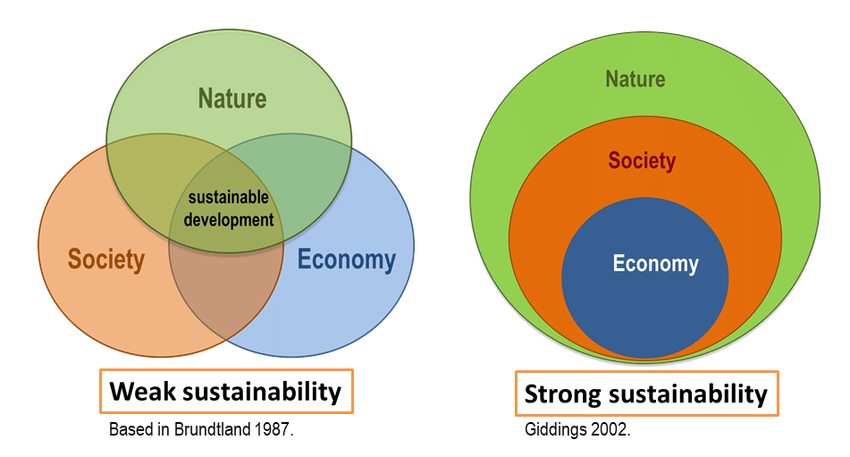1. Introduction
Sustainable Development
Seeks to meet the needs of the present without compromising the ability to meet those of the future
Better quality of life for all now and in the future
Considers the social, environmental and economic sustainability
Strong sustainability acknowledges that the economy is part of society, which exists within the environment

What is unsustainable?
environmental and ecological trends, i.e. current greenhouse gas emissions and climate change
use of finite resources at current rates
population growth and growing poverty
inequality
current socio-economic priorities
Climate Change
Buildings have a large impact on UK greenhouse gas emissions. Greenhouse gas emissions from Transport Residential and Waste Management can all be impacted by the actions of civil engineers.
The UK has had an overall reduction in greenhouse gas emissions since 1990.
Biodiversity
Biodiversity measures the variety and variability of life on earth, including genes, species and ecosystems.
The Global living planet index has reduced by 68% since 1970. The Living Planet Index (LPI) is a measure of the state of the world's biological diversity based on population trends of vertebrate species from terrestrial, freshwater and marine habitats.
Ecological Footprint
Ecological footprint is humanity’s demand for the planet’s living resources.
The ecological footprint exceeds the planet’s regenerative capacity and this difference is growing. This causes ecosystems to run down, and waste is growing in the air, land and water; this results in deforestation, water shortages, declining biodiversity and climate change. This is putting the well-being and development of all nations at increasing risk.
The ecological footprint is measured in hectares and includes several components:
Carbon - the area of forest land that could sequester CO2 emissions
Cropland - the area of land used to grow crops for food and fibre for human consumption
Grazing land - the amount of grazing land used to raise livestock for meat, dairy, hide and wool products
Forest - the amount of forest required to supply timber products, pulp and fuel wood
Built-up land - the amount of land covered by human infrastructure
Fishing grounds - calculated from the estimated primary production required to support the fish and seafood caught, based on catch data
Ecological footprint compared to the earth’s biocapacity. Global overshoot is when the ecological footprint is greater than the earth’s biocapacity.
Components of ecological footprint - Carbon, Cropland, Grazing land, Forest, Built up land, Fishing Grounds
Population and Nutrition
Population growing exponentially, the highest is in Africa and Asia. Asia’s population growth rate is slowing.
It is projected that the number of malnourished people will increase significantly.
Quality of Life
This is difficult to define because there are so many aspects which affect well-being.
Human development index - measures the average achievement through three basic dimensions: a long and healthy life, knowledge and a decent standard of living
Life expectancy at birth
Mean years of schooling
Expected years of schooling
Gross national income per capita, but this is not a fair indicator if people are not living good lives
Comparing the quality of life through human development to ecological footprint shows that lower developed countries are more sustainable. As a country develops, there is more access to technologies which increases the ecological footprint.
Income inequality is measured based on the percentage of the total income of the population that is earned by the top 10 per cent of earners.
Ecosystems and Biodiversity
Ecosystem - a dynamic complex of plant, animal and micro-organism communities and their non-living environments interacting as a functional unit.
Examples of ecosystems - deserts, coral reefs, wetlands, rainforests, boreal forests, grasslands, urban parks, cultivated farmlands.
Ecosystem services - the benefits that people obtain from ecosystems.
Examples of ecosystem services - food, freshwater, timber, climate regulation, protection from natural hazards, erosion control, pharmaceutical ingredients and recreation.
Biodiversity is not an ecosystem service but underpins the supply of services.
 Knowt
Knowt